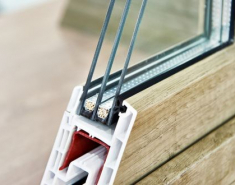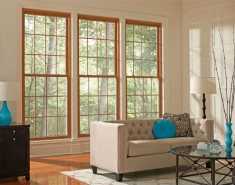Home improvement projects that reportedly don’t pay off at resale
Boston-area homeowners spent $5.2 billion on home improvement projects in 2017, according to Harvard’s Joint Center for Housing Studies, and it’s little wonder why. Our housing stock is old, for one thing, so about half of that money was spent on replacement projects as opposed to discretionary upgrades. But with home values climbing for nearly seven years straight and many buyers willing to pay a premium for a move-in ready home, remodelers are sometimes rewarded with a higher price at resale, making renovations seem like a sound investment.
But not every project is going to yield a commensurate increase in your property’s value. “Dollars into a home doesn’t always translate into dollars out,’’ said Dana Bull, a real estate investor and realtor with Sagan Harborside Sotheby’s International Realty in Marblehead.
That’s particularly true if the money is spent addressing structural issues or other basic features that buyers will generally take for granted, Bull said. Such updates are certainly important, but they’re merely getting you back to square one. “Buyers expect a home that is structurally sound and free of safety issues,’’ she said. “So just because you sink money into repairing a rotted sill doesn’t necessarily mean you will make that money back in a sale.’’
But even discretionary upgrades can fall flat. Pools are a notorious example; many buyers are turned off by the maintenance, liability, or loss of a backyard — especially in New England, where swimming season feels like a blip on the calendar. “That new $65,000 in-ground pool is likely worth about $8,000 to $12,000 at sunset on the day it was completed,’’ said Adam Wiener, chief executive and chief appraiser at Aladdin Appraisal in Newton. “This ain’t Santa Barbara.’’
Reducing a home’s bedroom count can be another mistake, at least in terms of resale value, said Jonathan Parker, owner/broker at RE/Max Encore in Wilmington. He’s seen many sellers remove walls to make larger master suites in what were originally three-bedroom Capes and ranches. “They’re making maybe a two-bedroom, which they think is great because the Cape traditionally might have smaller bedrooms on the second floor,’’ Parker said. “But it’s easier to sell, long term, a three-bedroom house than a two-bedroom or one-bedroom house.’’
Another feature you’ll want to keep for future buyers is a bathtub, because families with young children generally want at least one tub, as Parker recently explained to friends taking on a remodel. “They have two full baths, and they want to remove both of the tubs and just do walk-in showers,’’ Parker said. “I said you should keep at least one tub for resale.’’
Other times, an improvement might add value to the home, but not nearly as much as the homeowner expects. “I had a seller who thought his sauna was worth an additional $20,000,’’ said Adam Rosenbaum, a realtor at Century 21 Adams KC in Arlington. “It was nice, but it didn’t convince buyers that it was worth paying a premium for.’’
“There’s often a mismatch between how sellers value items in their home and a buyer’s perception,’’ Bull added, particularly when it comes to custom-designed pieces. In fact, anything custom or personal can be hit-or-miss. “Either it resonates with the buyer or it doesn’t,’’ she said. “The same goes for unusual design — loud colors, punchy wallpaper, unique finishes.’’
Parker loves wallpaper. “I think it can be really fun and funky if you have a powder room or something on the main level,’’ he said, “but it’s so custom and so specific that you’re not necessarily going to get a return on it.’’
And the price may be right, but unless you’re really skilled, don’t count on potential buyers to be as impressed with your do-it-yourself handiwork as you are. “Owner installed built-ins, moldings, doors, and windows, and other carpentry projects that are of poor quality craftsmanship is a tough one,’’ Wiener said. “They are so happy and proud, and yet the workmanship is so bad.’’
Parker said DIY tile installations can look very amateurish and hurt a home’s value. “I see the worst tile jobs out there,’’ he said. “The tile is uneven, the grout’s horrible, it’s not even, it’s not consistent, it’s gross and falling out … and it’s just obvious that the seller put that backsplash in or did that half bath floor.’’
Depending on the area and home, stripping historic features during a remodel could also cost you. “In very historic areas like ‘Old-Town’ Marblehead or near the Monument in Charlestown, some buyers expect to see period details and are disappointed when homes have been gutted without maintaining any original charm,’’ Bull said. However, those neighborhoods and buyers tend to be the exception. “Sadly, a lot of people don’t appreciate historical elements. I’ve seen painted mahogany trim that buyers love — I cringe,’’ she said.
For more guidance, we looked at two big annual surveys that try to pin down which home improvements offer the best return on investment at resale and which ones don’t. The National Association of Realtors surveyed hundreds of contractors, homeowners, and real estate agents for its 2019 Remodeling Impact Report, which compares homeowner satisfaction with cost and recovery estimates for 20 common projects. Meanwhile, Remodeling magazine’s 2019 Cost vs. Value report surveyed contractors and realtors to arrive at its own conclusions, including data specific to the Boston area.
In the NAR study, a closet renovation provided the worst return on investment, with realtors estimating it would recoup only 40 percent of the project’s cost. A new bathroom addition and new master suite had the next lowest recovery rates, at 50 percent. And while real estate agents expected a modest kitchen upgrade to recover only 52 percent of the project cost at resale, 1 in 5 said the project at least helped close a recent sale.
Among the 22 projects analyzed in Remodeling’s report, an “upscale’’ master suite addition delivered the worst bang for the buck in the Boston area, recouping only 53.9 percent of the cost. Adding a patio returned a similarly low 55.5 percent. However, their idea of a new backyard patio may be considerably more elaborate than yours. The magazine asked contractors to price out a 400-square-foot flagstone patio with a cedar pergola and a sliding glass door — but also underground gas and electric service for a fire pit and full outdoor kitchen. Realtors expected such an improvement to add nearly $40,000 to a home’s value in Boston, but contractors estimated it would cost more than $68,000 to build.
That’s another point: It can be harder to recover the cost of pricey or ultra-high-end projects, because there are more expenses to recoup and the market for such features is inherently limited. “There’s no shortage of luxury homes and only a small subset of potential buyers,’’ Bull said.
Whether a luxury renovation hits the mark with buyers can depend on the home and the community it’s in, Parker said. “If I just spent $75,000 on shrubs, and everyone else in my neighborhood just has basic vinyl fences, I’m probably not going to get the return on that,’’ he said. “Market expectations vary based on location, even within a city or town,’’ Wiener said. “It’s wise to stay within your home’s lane. Don’t do a luxury-level remodel in your slab ranch home.’’
Geographic differences can also determine whether a particular home improvement will pay off and wow buyers. While the nationwide NAR survey indicated that finishing an attic or basement recoups only 56 percent to 64 percent of costs, respectively, eking out more living space can be a game changer in tight urban quarters. “In the city, adding square footage [by] finishing a basement or attic or finding somewhere to add a bathroom’’ can really boost a home’s value, Bull said.
A smart renovation also taps common sense to improve the utility of the home, said Weiner, who was a home remodeler for 16 years before he got into appraisals. “When a third floor has three bedrooms but no bathroom, adding a third-floor bathroom is worth more than if you put it on the second floor,’’ he said.
Of course, resale value isn’t the only consideration when remodeling, or even the primary one. Many people who take on a renovation do so to improve their home’s function or comfort — and that’s important when Americans are staying in their homes almost twice as long as they were a decade ago. In the second quarter, the average seller had been in his or her home for more than eight years, according to ATTOM Data Solutions, compared with an average of just over four years throughout the 2000s. In the Boston area, the average seller purchased his or her home more than 10.5 years ago.
And while a closet renovation may not recover even half its estimated cost upon resale, it might just make your life a lot easier every morning. Perhaps that’s why a closet renovation was one of just two projects (along with a complete kitchen upgrade) to receive a perfect “Joy Score’’ of 10 from happy homeowners in the NAR survey.
The truth is, Weiner said, “most everything you do to improve your home does not return dollar for dollar. People should do what will be enjoyable for their family lifestyle, but should not expect a positive return on investment.’’
When it comes time to sell, Wiener added, the home improvements that will boost your home’s value are far less glamorous or expensive. “Decluttering, staging, paint, ammonia, and elbow grease give the number one return on investment,’’ he said. “And that is not in the Cost vs. Value report.’’
Source: https://bit.ly/2Rhhie7









